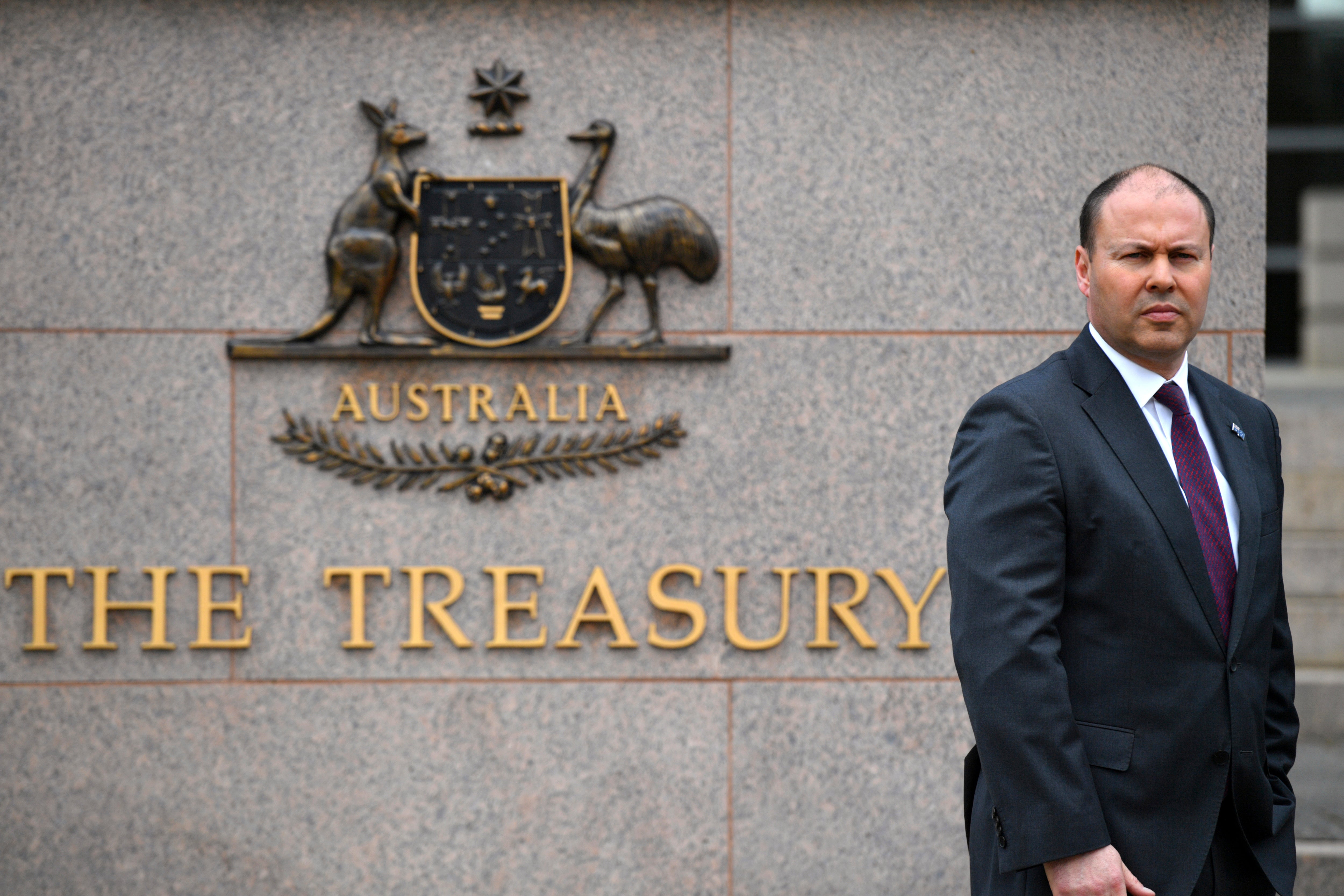Australia plans massive pandemic budget, record deficit
The Australian government has announced plans to cut income taxes, create jobs for young people and stimulate business investment with a raft of pandemic measures that would create a record 214 billion Australian dollar ($153 billion) deficit in the current fiscal year

Your support helps us to tell the story
From reproductive rights to climate change to Big Tech, The Independent is on the ground when the story is developing. Whether it's investigating the financials of Elon Musk's pro-Trump PAC or producing our latest documentary, 'The A Word', which shines a light on the American women fighting for reproductive rights, we know how important it is to parse out the facts from the messaging.
At such a critical moment in US history, we need reporters on the ground. Your donation allows us to keep sending journalists to speak to both sides of the story.
The Independent is trusted by Americans across the entire political spectrum. And unlike many other quality news outlets, we choose not to lock Americans out of our reporting and analysis with paywalls. We believe quality journalism should be available to everyone, paid for by those who can afford it.
Your support makes all the difference.The Australian government on Tuesday announced plans to cut income taxes, create jobs for young people and stimulate business investment with a raft of pandemic measures that would create a record 214 billion Australian dollar ($153 billion) deficit in the current fiscal year.
Treasurer Josh Frydenberg announced his annual budget plans for the year that started on July 1, with economic forecasts based on an assumption that a COVID-19 vaccine will be available next year.
But the Treasury Department has warned that economic realities could be “substantially different” from its forecasts without a vaccine.
Net debt will increase to 703 billion Australian dollars ($503 billion), or 36% of gross domestic product, at the end of the current fiscal year and peak at 44% of GDP in mid-2024 when debt will exceed 966 billion Australian dollars ($691 billion).
“This is a heavy burden, but a necessary one to responsibly deal with the greatest challenge of our time,” Frydenberg told Parliament
At its peak, net debt as a share of the Australian economy would be half the current proportion in Britain, a third of the share in the United States and a quarter of the Japanese proportion, Frydenberg said.
More than 11.5 million taxpayers among the Australian population of 26 million people would gain an income tax cut back-dated to July 1, according to plan. It needs Parliament’s endorsement.
More than 7 million would receive a tax cut of more than 2,000 Australian dollars ($1,430) a year. The tax cuts would cost Australia’s coffers more than 50 billion Australian dollars ($36 billion) over four years.
The government is also offering a “JobMaker hiring credit” to encourage businesses to hire younger Australians. Young people have suffered most from job losses created by the pandemic.
Businesses that provide a job to an unemployed person under 30 years old would be gjven 200 Australian dollars ($145) a week for up to a year. The payment would be half that if the employee is aged between 30 and 35. The employees must be given at least 20 hours of work a week.
The government expects JobMaker would support 450,000 young employees.
To boost business investment, the vast majority of companies would be allowed to write off the full value of eligible assets against their tax debt.
“It will dramatically expand the productive capacity of the nation and create tens of thousands of jobs,” Frydenberg said.
Loss-making businesses would also be able to claim pandemic losses against profits they made as far back as 2018-2019, generating tax refunds for many.
Frydenberg said he will introduce into Parliament on Wednesday a bill that would make his proposed income tax cuts and business tax breaks law.
“I want these measures to be implemented as fast as possible,” he said.
The government expects the Australian economy will shrink by 1.5% in the current fiscal year before expanding by 4.75% in 2021-22.
Unemployment is expected to peak at 8% in the December quarter before receding to 5.5% in 2023-24.
In August, the official unemployment rate was 6.8%. The government estimates it would already be 12% if the government had not paid employers 101 billion Australian dollars ($72 billion) to keep 3.5 million people in jobs during the pandemic.
Around 10% of Australian workers have lost their jobs or remain employed through the government subsidy despite working no hours.
The government forecasts that the annual deficit would shrink to 112 billion Australian dollars ($80 billion) in 2021-22 and continue downward to 2024.
The budget forecasts assume that a COVID-19 vaccination program was “fully in place by late 2021” in Australia and pandemic restrictions continue to ease.
But the outcomes could be much different if that is not the case, the budget documents said.
“The range of possible outcomes for GDP and unemployment in particular is substantially wider than normal,” the Treasury department said. “This translates into a higher than usual degree of uncertainty for the estimates.”
Early in 2019, the government forecast a 7 billion Australian dollar ($5 billion) surplus in the year that ended on June 30, 2020. That would have been Australia’s first surplus in 12 years.
But the pandemic turned that result into a 85 billion Australian dollar ($61 billion) deficit.
The pandemic has caused shortages of in supply chains and highlighted the decline in Australia’s manufacturing industries that have failed to compete against Chinese imports.
The government plans to invest 1.3 billion Australian dollars ($930 million) in areas of national manufacturing priority, including medical products, defense and the space industry.